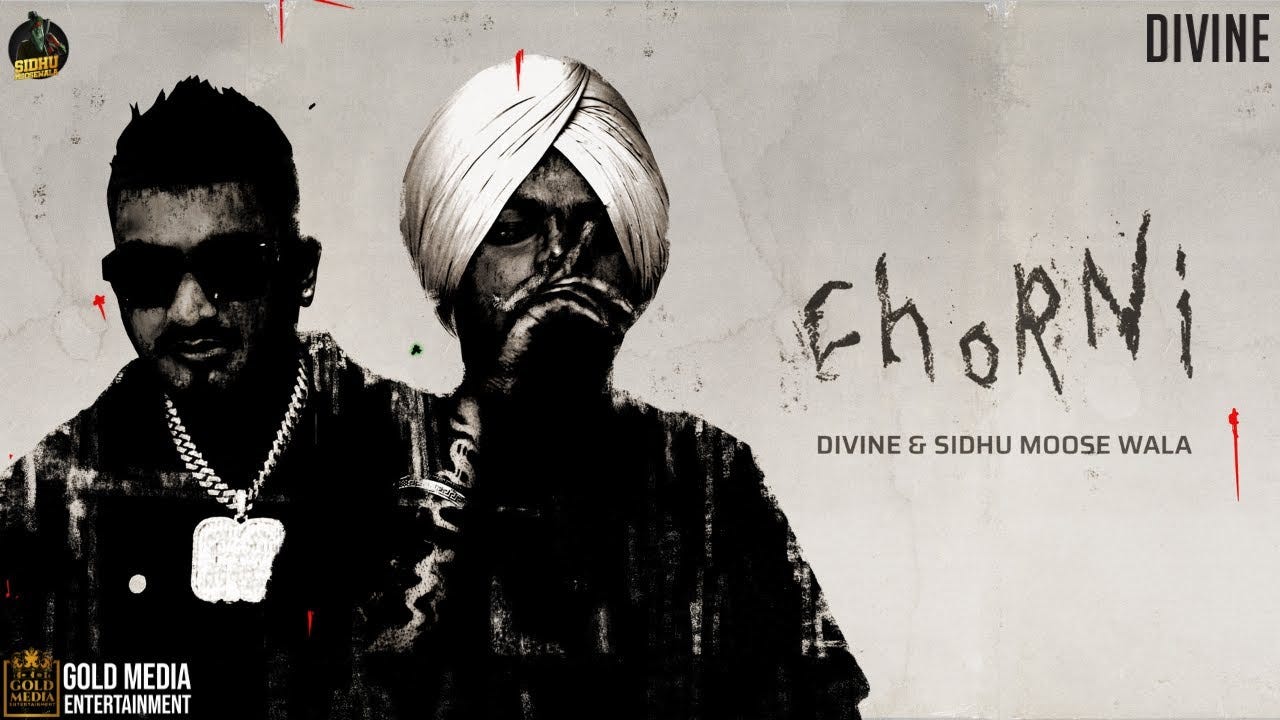There’s no toothpaste in my movie hall
One big Bollywood hit can make or break a theatre’s financial quarter. But, to truly prove the industry is back on track, you need to check in-cinema ads. Also in today’s edition: Zuckerberg may have just handed finfluencers a new, unsupervised playgr
Good afternoon!
Welcome to The Impression, your weekly primer on the business of media, entertainment, and content.
If someone shared this newsletter with you or if you’ve found the online version, hit the button below to subscribe now—it’s free! You can unsubscribe anytime.
When I’m headed to the movies, I like to make it in time for the previews. I’ve already seen it repeatedly on YouTube, but I’m really looking forward to watching the ‘prevue’ of Shahrukh Khan’s Jawan on the big screen. There aren’t even as many ads before the movie and in intermission anymore. You know the ones: the big Bollywood icon telling you to dial for help, the string of actors asking you to get dressed for a wedding. Or that evergreen jingle reminding you there’s nothing cosmetic in this toothpaste.
But less toothpaste in the movies is a warning sign of poor health—of the cinemas.
Cinema’s Toothpaste Test

Jake Hills/Unsplash
Manyavar, Vicco, and JustDial are just a few of the big, national brands that have consistently been advertising at the cinema hall. But, post-pandemic, the movie ads are drying up. India’s largest multiplex chain PVR-Inox is currently averaging about 12 minutes of ads in a movie, even though it has space for up to 19 minutes, the company told investors in a call (pdf).
Almost every other major metric measuring Indian cinemas’ performance is running below pre-pandemic levels – occupancy rates, footfalls, number of tickets sold. Now this year’s June quarter is also probably a washout after Bollywood delivered a string of flops including that mega disaster called Adipurush. Contrary to expectations, the latest Indiana Jones didn’t stick the landing either.
Cinema owners are upbeat about July at least. Tom Cruise’s Mission Impossible 7, Christopher Nolan’s Oppenheimer and Margot Robbie’s hyped Barbie are all releasing back-to-back this month. And they’re all running an IMAX version too, meaning cinemas have a chance to earn more from higher priced tickets.
Getting people back to the theatres and buying more tickets is a mission critical for the industry, but there is another crucial source of income that hinges on its success–ads.
Cinemas are barely earning from advertising since the pandemic. If you take PVR-Inox as a yardstick, advertisement income in FY23 was still 31% lower than what both multiplex chains earned together in FY20, per its latest reported earnings (pdf).
These dire straits have prompted another cinema business merger (of sorts). Last week, in-cinema advertising firm UFO Moviez announced two joint ventures (pdf) with Qube Cinema Technologies, which sells films distribution and screening tech and also delivers in-cinema ads. One of the JVs will focus on in-cinema advertising, combining the ad inventory in approximately 6,500 screens served by both companies, along with other ad spaces off-screen (say, displays in a theatre’s box office area) and on UFO Moviez’ Caravan Talkies, a movie screening on-the-wheels meant for rural areas.
Like the cinema owners, UFO Moviez has had a hard time since the pandemic. The company’s total income in FY23 was below what it earned even in FY19 and about 32% lower than total income earned in FY20, according to its latest available numbers (pdf). That’s pretty much in line with PVR-Inox’s drop in ad revenue too.
But unlike cinemas, the fortunes of firms like UFO Moviez aren’t directly linked to the box office success of individual films. Rather, they need a consistent run of hit films that brings audiences back and boosts advertisers’ confidence.
“So, while we mention the success of films like Pathaan in the last quarter and our expectations for Adipurush this quarter, it doesn't mean that these particular films will significantly contribute to our overall revenue,” UFO Moviez’ chief financial officer Ashish Malushte told investors in a call this May. “Our biggest challenge, and one we are handling well in my opinion, is to regain the trust of advertisers and bring them back to our medium.”
Movies are performing so patchily, it’s possible that this consistent period of good performance may not come for a long time. UFO Moviez’ management had said two factors were hurting their business the most. One, the drop in ad spends by the central government had eaten into their earnings and two, meeting minimum guarantees in ad revenue means a larger percentage of their total income was going to theatre owners.
“Cinema is a fragmented market,” Rajesh Mishra, executive director of UFO Moviez, told The Impression. “The whole idea of this JV is to offer more consolidated [advertising] inventory, give them wider coverage and more national reach.” Mishra added that as a JV, both companies will also have more feet on the ground, allowing them to reach out to potential advertisers more aggressively.
Naturally, a good fix for the time being is consolidating inventory. Qube Cinema has ad inventory in over 3,700 screens, primarily in Tamil Nadu, Andhra Pradesh, Karnataka, Kerala, and Telangana. UFO Moviez has about 3,300 screens in its ad network. Together, they might be able to withstand the overall slowdown in ad spending as well.
UFO Moviez’ Mishra says there is a very long tail of advertisers among smaller, regional brands who only place ads in theatres in one state or one city. While they’re still active, large brands with national reach are still not spending as much as they did pre-pandemic. One such set of advertisers are FMCG companies whose spending forms the bedrock of India’s advertising industry (especially TV). Mishra added that the September quarter looked promising, with several Bollywood and South Indian films lined up for release.
So, while the performance of stocks like PVR-Inox (down 1.6% year to date) could be a good way to check if the movies business is recovering, the real test is in the dealmaking and stock performance of companies like UFO Moviez (down over 15% year to date). Only when those toothpaste ads start rolling long enough before your favourite movie can you say, confidently, that cinema is back.
Telegram Tipsters lean into Threads

Chris Curry/Unsplash
Zuckerberg’s Twitter clone is on fire. Threads has hit 100 million sign-ups in a record five days, surpassing ChatGPT’s record as the fastest growing consumer-facing app. What might have helped is that anyone with an Instagram account can easily sign up for a Threads account. Naturally, that means droves of Insta-natives are coming to the text-first platform, mostly fashion folks and small-time celebrities. And then, there are finfluencers.
The big names like CA Rachana Ranade, Akshat Shrivastava, and Sharan Hegde have already racked up thousands of followers on Threads in a matter of days. But, Telegram traders are also showing up on the platform in droves. Threads’ search capabilities are nonexistent right now, but a cursory search for usual names and keywords throws up hundreds of options traders’ accounts offering stock market calls, posting screenshots of their supposed trade profits, and urging people to sign up for their courses and their Telegram channels.
Take options trader Aakanksha Gupta for example. She has over 150,000 followers on Twitter, about 41,000 on Instagram, and nearly 80,000 subscribers on her Telegram channel ‘Aakanksha Options Learning’. This channel is where she sells her options trading course (often with discounts for channel subscribers), offers trading targets on various indices, and posts screenshots of profits that her clients say they made on their trades. Since last week, she’s been posting on Threads where she already has 2,600 followers. She’s been posting a link to her Telegram channel on Threads along with a mix of quotes, some markets analysis, and testimonials from the students of her options trading courses.
On her Telegram channel, she’s told followers she’ll be posting a lot more on Threads. Here’s a message from her Telegram channel from earlier this week:
“Like this thread app so much…Going forward, will be putting knowledgeable content on it. I hope it doesn’t become gossip platform again 😂😂”
Apart from these known names, hundreds of telegram channel finfluencers are now on Threads, with a few thousand followers each. Many haven’t posted yet (like this account that has over 74,000 subscribers on its Telegram channel) or are mostly driving sign-ups to their Telegram channels (like Aakanksha Gupta) or their trading courses (like Apoorva Sharma and Abhishek Kar).
Add all this to the already long list of platforms regulators and exchanges must monitor for rule-breaking finfluencers. Threads is so new, it doesn’t have the standard disclosure features to indicate paid partnerships on the platform. The Advertising Standards Council of India made these disclosures for influencers mandatory last year (although these are guidelines).
Threads is too new for regulators too. Already, the National Stock Exchange has been issuing notes of caution against illegal brokers offering stock tips and guaranteed returns via messaging apps, Telegram channels, and custom websites. In the past few months, NSE has issued at least one such ‘Caution for Investors’ notice every week, sometimes multiple such notices on a single day.
Remember, Sebi has also been cracking down on finfluencers who offer investment advice without being registered investment advisors (read more about one such high-profile case in this edition of The Impression). Since then, these finfluencers have been scrambling to get hold of a Sebi registration licence, often using others’ licences and even ‘renting’ them out to dispense investment advice to clients. Aakanksha Gupta, for example, says she’s a research analyst with another Sebi-registered research analyst (not investment advisor) named Chaitanya Lapsia. There are no disclaimers about her Sebi-registration status on her Threads account. And Telegram channel operators have little in their bio except for a link – to their Telegram channels.
These are still very early days for Threads and there’s no guarantee the platform will even survive once the hype dies down (remember Clubhouse?). But until it’s around, finfluencers may have found one safe haven from prying (regulatory) eyes.
Last Scroll Down📲

GIPHY
No rest for the weary: Zee Entertainment’s owners can’t catch a break. Last month, Sebi banned owners Subhash Chandra and Punit Goenka from taking any key management position in any listed firm (pdf) over allegations the family siphoned off money using a web of subsidiaries. Then, Zee moved an appeal against the interim order and this week it was rejected. Zee needs to close its terribly delayed merger with Sony India, but it may have to do so without Zee chairman Punit Goenka at the helm. It’s a hard choice–get the merger done or hold on to the top job?
Not so hot on Star: Disney is looking for financial help on Star India. It is in early talks with potential investors about doing a joint venture or an outright sale, Wall Street Journal reported. Star India’s earnings for the year ending September 2023 are well below what Fox had projected when selling the business to Disney. One big reason–the loss of IPL rights after which subscribers are leaving Hotstar in droves.
Snakes and Ladders: Taxes are inevitable, but they can be unpredictable. The government has decided to impose 28% GST–-India’s highest tax slab–on all online real-money games. What’s more, this will be charged on the entire value of a real-money game’s prize pool, and not on the platform’s fees. Online poker, rummy and fantasy gaming companies say this will wreck the industry. Meanwhile, cinema owners are in luck; the food and drinks they sell in theatres will now be taxed at 5%, not 18%. But, if the food is sold in combination with a movie ticket, it will be taxed at 12%, the same rate as the ticket.
Hollywood Halt: It might all come to a screeching halt. Hollywood’s actors guild SAG-AFTRA might soon join the ongoing writers’ strike, the first time in 63 years that both groups of professionals halt work over disputes with big studios. The actors’ concerns are similar to writers’ – controlling the use of AI in filmmaking and better compensation terms from streaming services. A group of top studio CEOs is asking for a federal mediator to run talks with SAG-AFTRA and prevent the strike, Variety reported.
Ban-Ban: Is it better to ban an app or the entire internet? India’s telecom regulator TRAI has floated a consultation paper (pdf), proposing rules that will let it selectively ban apps in times of ‘civil unrest’ as opposed to the entire internet. TRAI also wants to bring communication apps like WhatsApp and Signal under its licensing regime, rather than leaving them to follow the IT Act. Telecom companies support this; they say these apps act like telecom companies with their calling and messaging services, but they’re free of TRAI’s onerous licences.
Trumpet 🎺


CHORNI (Official Video) SIDHU MOOSE WALA | DIVINE | NAVKARAN BRAR
‘Resurrecting’ a deceased music star isn’t an easy thing to do technically. In Moosewala’s case, the controversy surrounding his life and violent death makes it an even more complex decision. But here you have it: a tractor racing down a suspension bridge, a massive aircraft with “Moosa Forever’ emblazoned on it, and the man himself–Sidhu Moosewala singing to the camera atop a (CGI) skyscraper.
Chorni is Moosewala’s fourth posthumously released song. This one has a collaboration with R&B artist Divine. Since its release last weekend, the song is already number 1 on YouTube India’s trending music videos with over 14 million views.
Inside Motion Pictures worked on special effects for the video (they’ve worked on Moosewala’s other music videos too). Chorni has a long roster of special effects creators including a dedicated deepfake artist, and separate 3D model artists for Sidhu Moosewala and his tractor featured in the video.
Artists have lately been using deepfake technology to create richer, more varied videos. Among the earliest successful attempts was Kendrick Lamar’s The Heart Part 5 released in May last year; Lamar used deepfake technology to morph his face into the likeness of several controversial Black stars including OJ Simpson and Kanye West.
Official deepfake ‘resurrections’ of deceased artists are a little less common (we have seen holographic projections though). Moosewala’s family, too, is reportedly trying to put together a concert of the star using holograms. Until that happens, deepfake tech does the job. This is a short breakdown by deepfake artist Insight Keti on how the team featured a singing Sidhu Moosewala in another posthumous track Mera Naa.
That’s all this week. If you enjoyed reading The Impression, please share it with your friends, family, and colleagues. And please write to me anytime at soumya@thesignal.co with thoughts, feedback, criticism or anything you’d like to see discussed in this space. I'd love to hear from you.
Thanks for reading, and see you again next Wednesday!


